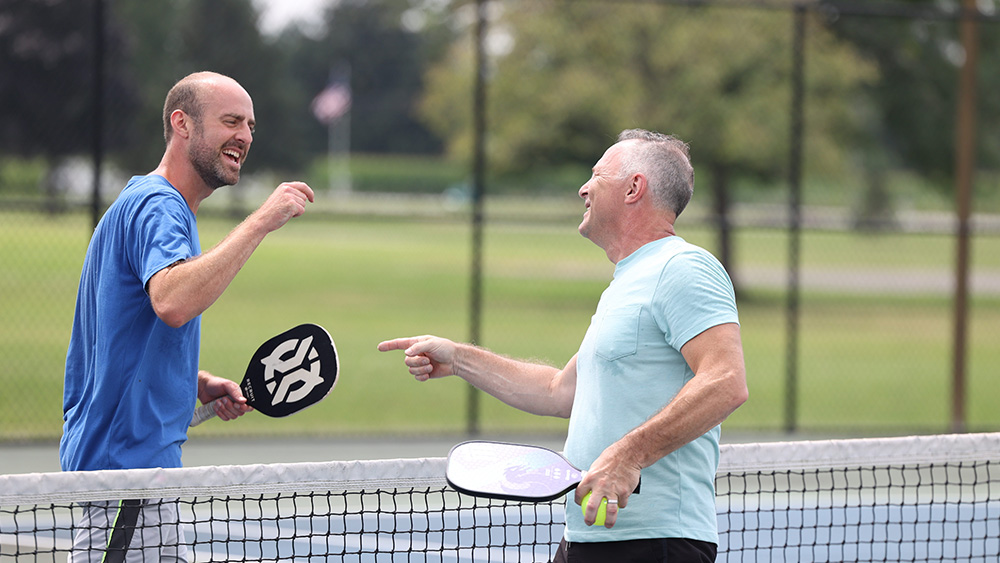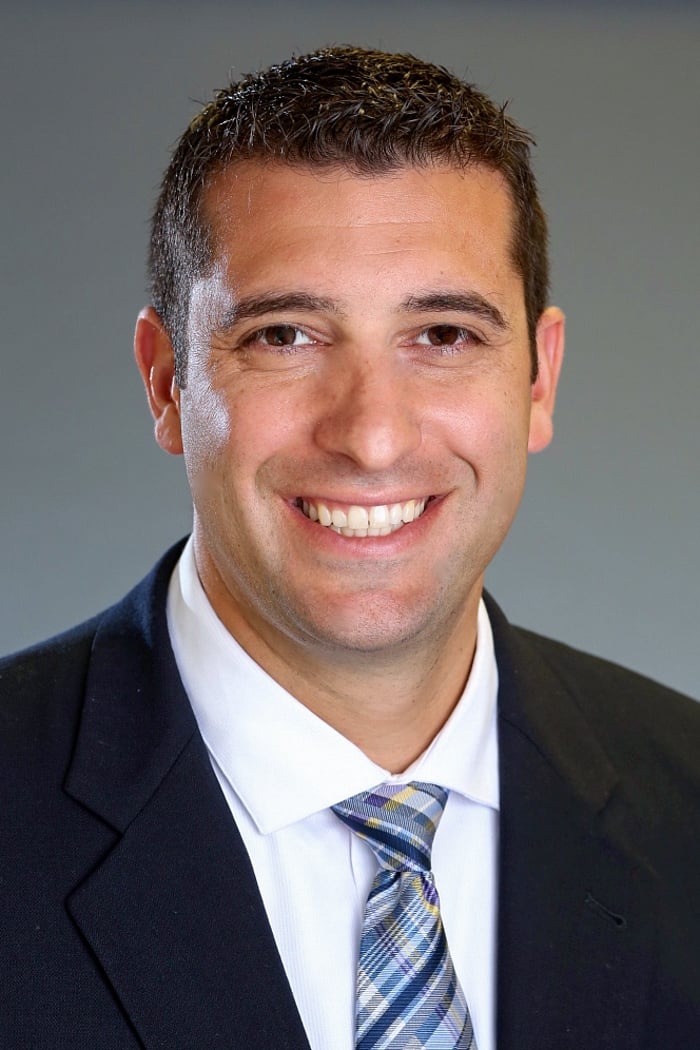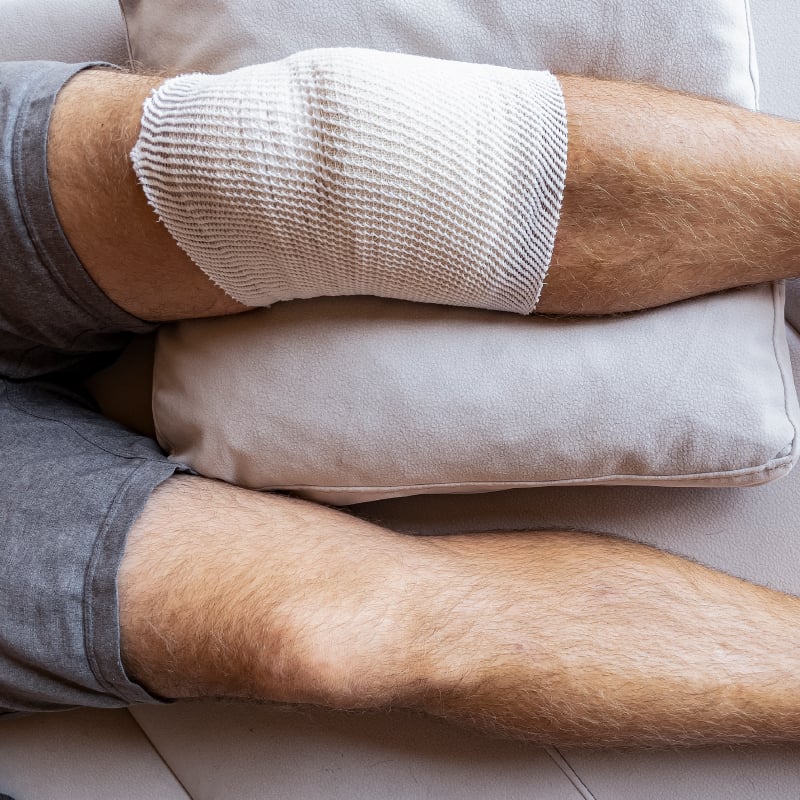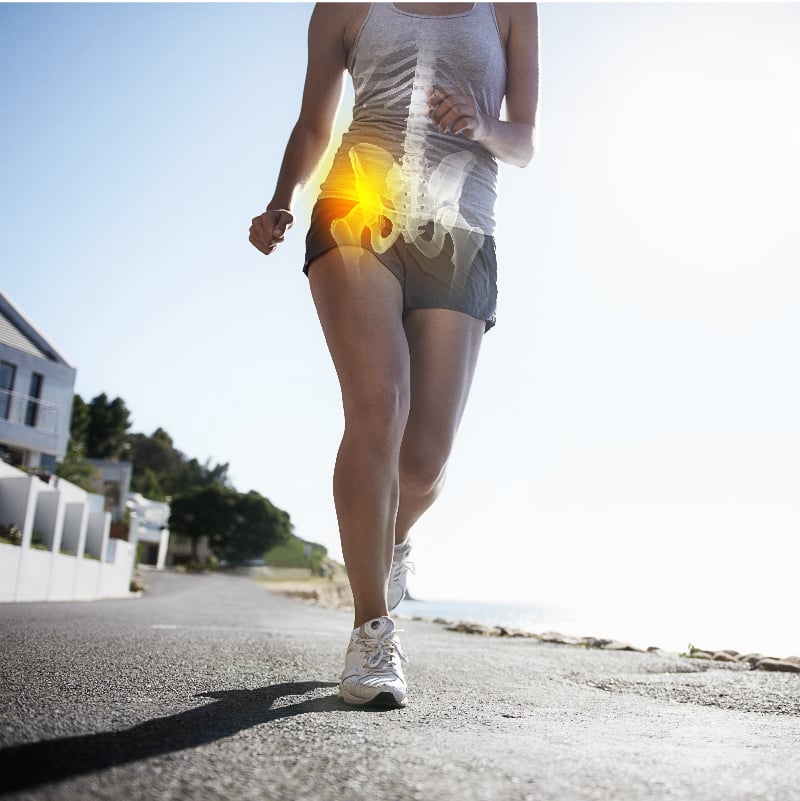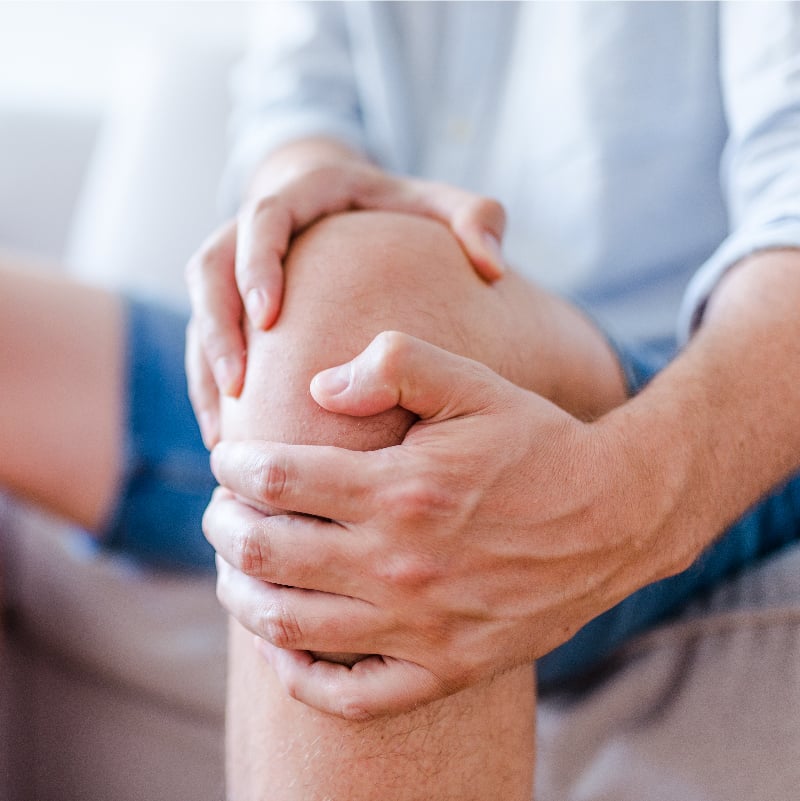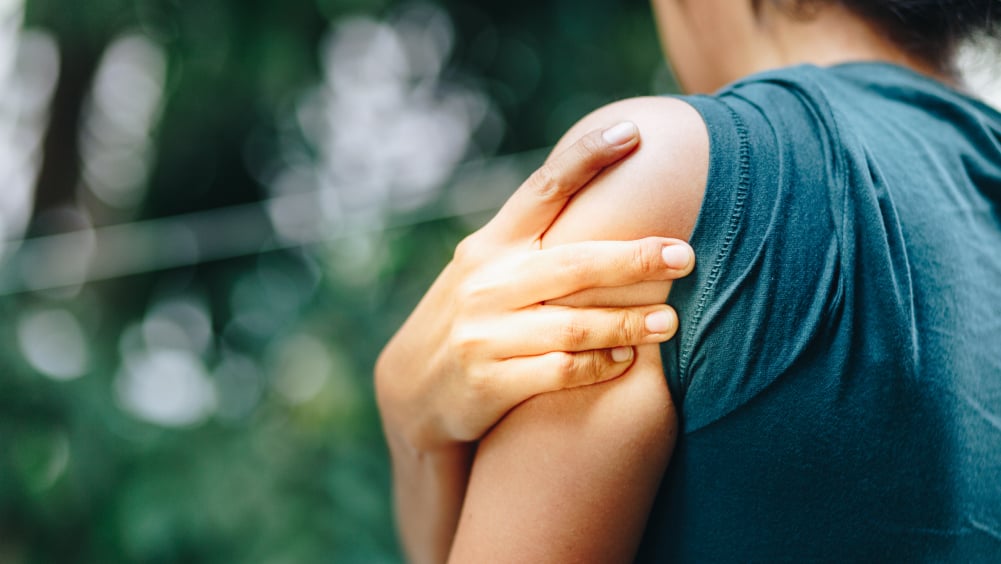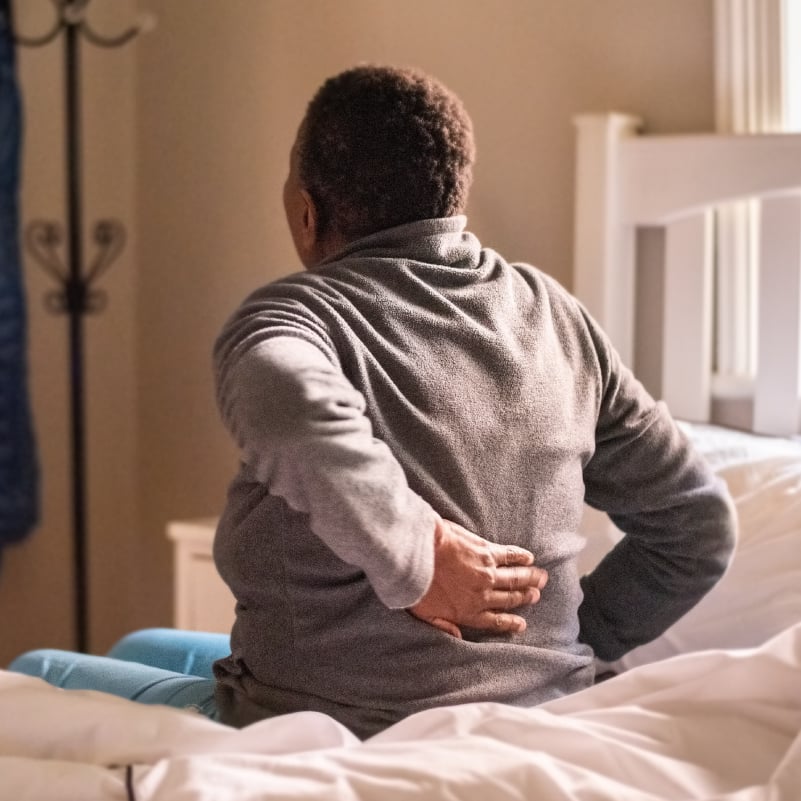Pickleball is one of the fastest growing sports in the U.S., with more than 40 million people reportedly playing at least once in the last year. As players and advocates alike will say, the sport is a wonderful way to stay active and be social with others.
Among the health benefits of playing pickleball are improved blood pressure, lowering cholesterol, better lung function, and enhanced hand-eye coordination.
Michael Stanton, MD, is the Medical Director of Sports Medicine for Rochester Regional Health and offers reminders for avid pickleballers on what they should keep in mind to prevent injuries and keep playing longer.
Common pickleball injuries
1. Muscle strains
Since there is so much sprinting in pickleball, muscle strains in the legs are fairly common. You might feel that pain with stretching or contracting muscles in your hamstrings, quadriceps, hip flexors, or calves.
Whether an injury is mild or severe, the first step should be the RICE treatment (rest, ice, compression, elevation). If the pain and swelling does not start to go down within 24-48 hours, schedule an appointment with one of our orthopedic specialists. They can assess your injury and see if there is a break or tear and create a treatment plan.
2. Ankle sprains or strains
In both pickleball and tennis, players tend to run, stop, and pivot quickly – which can lead to ankle sprains or strains.
When a sprain happens, the first thing to do is follow the RICE advice: Rest, Ice, Compression, and Elevate. Anti-inflammatory medication can reduce swelling, as well. You might need to use crutches or an ankle brace for a short time as needed. Contact or visit a provider at one of our orthopedic urgent care locations to determine if imaging or additional care may be needed.
3. Lower back strains
If you are bending forward and rotating your torso repeatedly during a game, your lower back muscles may become strained. Since lower back muscle strains can become chronic, it’s important to take these injuries seriously.
The RICE treatment (rest, ice, compression, elevation) is helpful to treat these initially. After the pain has gone away, preventative stretching and strength training can help to build up the muscles and tendons around the affected area and lessen the chances of a repeated injury.
4. Knee injuries
Frequent starting and stopping affects not only the ankles, but the tendons and ligaments around the knee too. If you do a quick turn or pivot and feel a sharp pain in your knee or can’t put any weight on your foot, you may have injured one of those tissues or tendons. Swelling is usually a telltale sign of a knee injury, too.
Visit an orthopedic specialist to get the injury assessed. Treatments vary widely for knee injuries, ranging from rest and wearing a brace to surgical repair.
Ways to prevent pickleball injuries
Hydrate: This is important no matter what type of exercise you are taking part in. Drinking water or a sports drink – without caffeine – is best. Try to remember to take a couple sips before you start, hydrate as you need it during the game, and replenish your fluids once you’re finished. This keeps your body in tip-top shape while it’s moving, and helps it to recover well afterward.
Stretch: Before and after a game, take the time to loosen up your limbs. Roll your shoulders, do some arm circles, stretch your hamstrings and calves – all of the parts of your body that will be moving while you play. The more prepared your body is, the less likely your muscles or tendons will be to be injured.
Take breaks: No one says you need to play straight through! If your body is telling you it needs a few minutes to breathe, take a seat on the bench and slow down. Over time, you will be able to build endurance and stay moving for longer periods of time.
Strength training: There are many benefits of strength training, including reducing future injuries. You don’t need to become a powerlifter; you can work with a physical therapist or sports medicine physician to strengthen the muscles and tendons in your body to give you better support.
“We want to make sure you are staying active for as long as possible,” Dr. Stanton said. “By working together to help you avoid injury and keep your body healthy, you will be able to play sports and stay socially active for years to come.”

